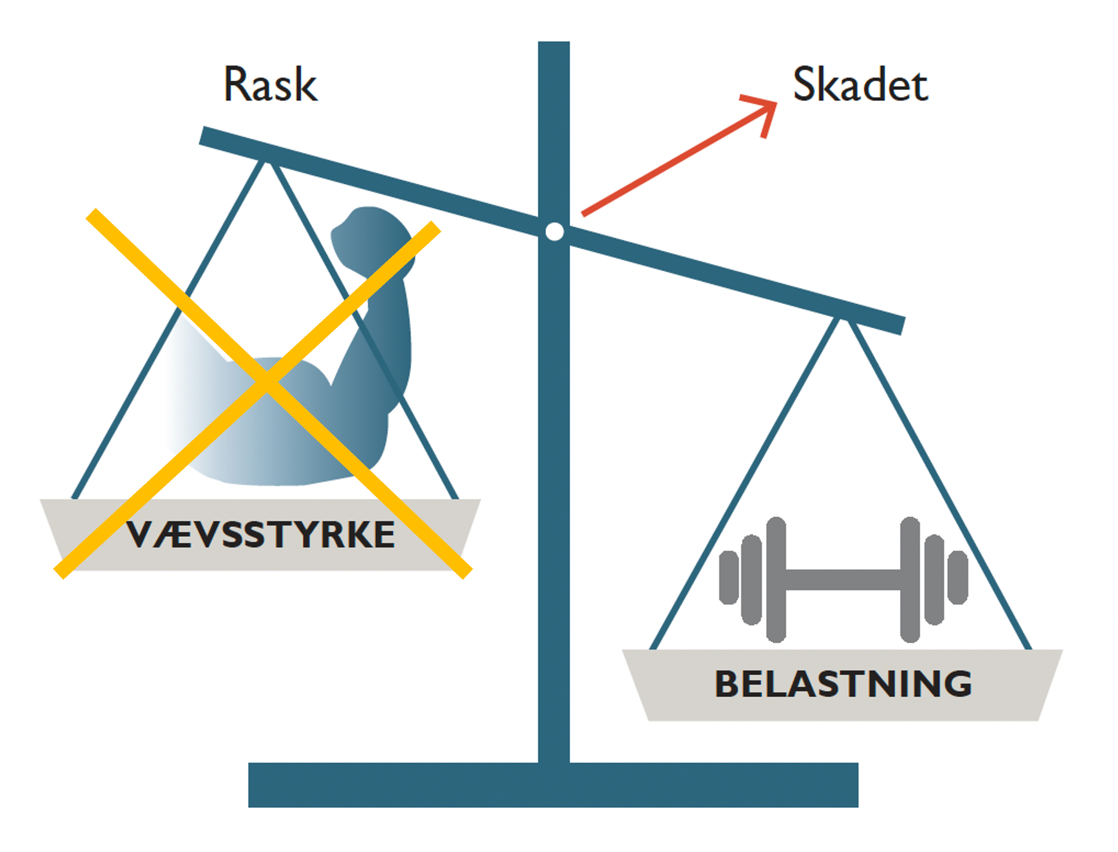As with adults, injuries occur when there is a mismatch between the load the tissue is subjected to and the strength of the tissue. Pain (soreness, loss of function, swelling) during sports activity is the body’s signal of overload, which should be responded to as soon as possible.
The big difference between rehabilitation of overuse injuries in children and adults is that adults can strengthen the injured tissue (muscles, tendons) through strength training, while children during the growth period often suffer overuse injuries from muscle and tendon attachments in the growth zones (apophyses), which cannot be strengthened through strength training. Treatment for children with overuse injuries from the growth zones is therefore primarily pain relief and then slowly increasing sports activity within the pain threshold. In contrast to adult injuries, strength training is therefore not an essential part of rehabilitation in children and adolescents during the growth period. 
Overuse injuries in children often affect the muscle and tendon attachments of growth zones on the bones (apophysitis). Overuse injuries are particularly common during the growth spurt at the start of puberty.
Acute injuries mainly include bone fractures, fatigue fractures, tears, joint slips and ligament injuries.
Especially in children and adolescents, it is important to get a medical examination if the injury is not completely trivial. It’s also important to realise that many illnesses in children present themselves for the first time during sports. This may be the onset of arthritis or other medical conditions involving the musculoskeletal system. Infections or tumours in muscles or bones often present with subtle symptoms during sport, and it is crucial for treatment outcomes that these conditions, although relatively rare, are diagnosed early so that appropriate treatment can be initiated.
For children and adults, it is important that all rehabilitation is conducted within the pain threshold. Children and adolescents are often less able to recognise and respond to the body’s warning signals and adapt rehabilitation to these signals (soreness, swelling, loss of function), which increases the risk that instead of a slow progression, rehabilitation will have a characteristic ‘jagged’ course with alternating progress and regression, indicating that the body’s warning signals are not respected and rehabilitation is being accelerated faster than the injured tissue can withstand.
For many children, participation in sports activities has a very high social value. It is therefore important that rehabilitation takes place together with non-injured peers. It will always be possible to organise some form of rehabilitation that ensures that the child with a sports injury can participate to a greater or lesser extent with or alongside their other sporting peers. It is therefore not appropriate for ‘rehabilitation’ to consist of a total break at home until the pain has subsided, and only then contacting the club to train with friends.
All rehabilitation should therefore take place in the same place where the non-injured peers are training and, as far as possible, children and adolescents should participate in parts of the training (e.g. warm-up, light technical exercises). When the non-injured peers then do exercises that the injured player should not be doing at their current level of rehabilitation, the injured player does specialised training on their own, but in the same area as the others. For example, an injured footballer can do ball juggling or heading exercises while his teammates are playing 2-goal football.
Most sports injuries in children and adolescents can be treated with short-term relief, while other injuries will require a simple rehabilitation programme, which can be found on the children’s version of www.sportnetdoc.dk where you are currently located. In many cases, these exercises can be made more ‘sport-specific’ and modified to be performed in the same place where non-injured peers are training. Some more serious injuries in older teenagers will require more detailed rehabilitation programmes, which in most cases can be found on the adult version of www.sportnetdoc.dk.
It is important to point out that no standardised rehabilitation programme can replace a specific medical assessment and individual guidance.
